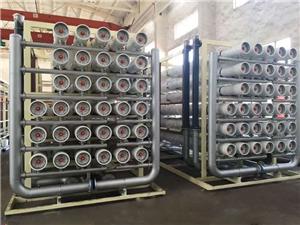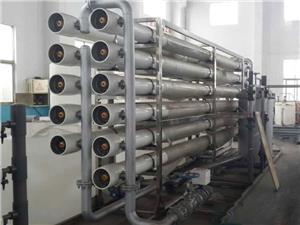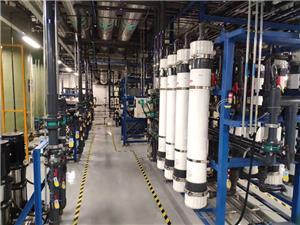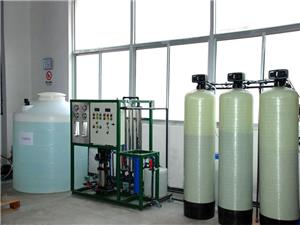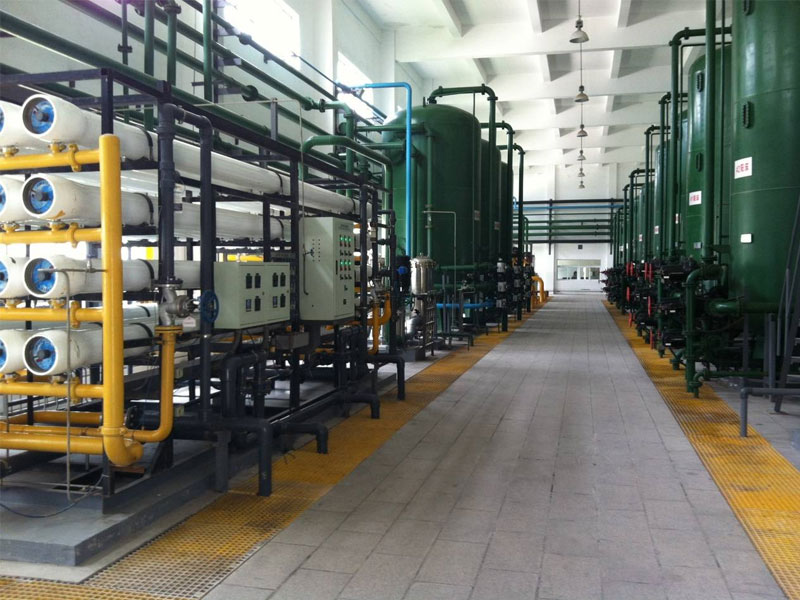Process flow of reverse osmosis treatment equipment
Raw water tank: store raw water for precipitating large particles of sediment and other precipitable substances in the water. At the same time, the impact of unstable water pressure in the raw water pipe on the water treatment system is buffered. (such as the response of pressure sensing caused by too low or too high water pressure);
Raw water pump: constant system water supply pressure, stable water supply;
Multi-media filter: a filter with a multi-sand filter layer, the main purpose is to remove sediment, rust, colloidal substances, suspended solids and other substances with particles above 20 μm contained in the raw water. Manual valve control or automatic controller can be used. Carry out a series of operations such as backwashing and positive washing to ensure the quality of water produced by the equipment and prolong the service life of the equipment;
Activated carbon filter: The system uses a nutshell activated carbon filter, which can not only adsorb electrolyte ions, but also perform ion exchange adsorption. The activated carbon adsorption can also reduce the oxygen consumption (COD) of potassium permanganate from 15mg/L (O2) to 2~7mg/L (O2). Play a catalytic role, remove pigments, odors, a large number of biochemical organic substances in water, reduce residual chlorine value and pesticide pollutants in water, and remove trihalide (THM) and other pollutants in water;
Ion softening system/dosing system: The softening/dosing system mainly removes scaling ions such as calcium and magnesium in water. When the raw water containing hardness ions passes through the resin layer in the exchanger, the calcium and magnesium ions in the water are replaced with the sodium ions adsorbed by the resin. Water is softened water with hardness removed;
Precision filter: The use of precision filter can remove suspended solids, non-straight particles and colloids and other substances remaining in the water, making the RO system and subsequent equipment run safer and more reliable. The filter element is a 5μm melt-blown filter element, the purpose is to remove the impurities larger than 5μm missed by the upper filter unit. Prevent it from entering the reverse osmosis treatment equipment and damage the surface of the membrane, thereby damaging the desalination performance of the membrane;
Reverse osmosis system: The reverse osmosis device uses sufficient pressure to separate the solvent (usually water) in the solution through the reverse osmosis membrane (or semi-permeable membrane), because this process is opposite to the direction of natural osmosis, so it is called reverse osmosis. The reverse osmosis method can adapt to all kinds of raw water with salt content, especially in water treatment projects with high salt content, and can obtain good technical and economic benefits. The reverse osmosis method has high desalination rate, high recovery rate, stable operation, small footprint, and easy operation. The reverse osmosis treatment equipment also removes most bacteria, colloids and large molecular weight organics while removing salt;
Ozone sterilizer/ultraviolet sterilizer (optional): kill bacteria caused by secondary pollution, and thoroughly ensure the hygienic index of finished water, raw water → raw water tank → raw water pump → multi-media filter (quartz sand filter) → activated carbon Filter → water softener (adding scale inhibitor device) → precision filter → high pressure pump → primary reverse osmosis (RO) device → ultraviolet sterilization device (ozone sterilization device) → water point.

